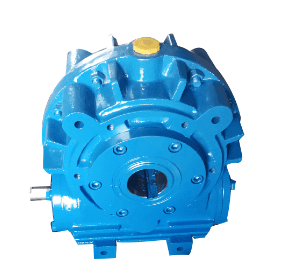Energy saving and environmental protection of high-efficiency reducer transmission device

With the rapid development of industrial production, energy consumption and environmental pollution are becoming increasingly serious, and energy conservation and environmental protection have become a global focus of common concern. As an important component of industrial transmission systems, the performance and efficiency of reducers have a significant impact on the energy consumption and emissions of the entire system. As an advanced transmission technology, the high-efficiency reducer transmission device has significant energy-saving and environmental protection advantages, providing strong support for the sustainable development of industrial production.
1、 Energy saving advantages of high-efficiency reducer transmission devices
Efficient Energy Efficiency: The high-efficiency reducer adopts advanced materials and design, with a high energy efficiency ratio, which can more efficiently convert input energy into mechanical energy, thereby reducing energy consumption. Compared with traditional gearboxes, high-efficiency gearboxes can increase energy efficiency by more than 20%, which helps to reduce energy waste.
Optimization design: The high-efficiency reducer reduces friction loss and internal heat by optimizing gear design and heat treatment process, and improves transmission efficiency. At the same time, precise machining and assembly processes are adopted to reduce gear clearance and transmission errors, further improving transmission efficiency.
Modular design: The high-efficiency reducer adopts a modular design, which facilitates users to customize and combine according to actual needs, avoiding resource waste. Meanwhile, modular design also helps improve the maintainability and replaceability of equipment, reducing maintenance costs.
Long lifespan: The high-efficiency reducer adopts high-quality materials and mature manufacturing technology, which has a long service life. This means that the frequency of replacement and maintenance can be reduced throughout the device's lifecycle, reducing operating costs.
2、 Environmental advantages of efficient gearbox transmission devices
Low emissions: Due to the high transmission efficiency and low energy consumption of high-efficiency reducers, they can reduce pollutant emissions in industrial production processes. Meanwhile, reducing energy consumption can also reduce dependence on fossil fuels and help reduce greenhouse gas emissions.
Noise control: The high-efficiency reducer adopts a low-noise design, which generates less noise during operation, helping to improve the working environment and reduce noise pollution to operators.
Resource recycling: The materials used in efficient gearboxes have high recycling value, which helps with the recycling of resources. At the same time, after the end of the equipment's lifespan, it can be recycled and processed through professional channels to reduce environmental pressure.
Green materials: The high-efficiency reducer adopts environmentally friendly materials and non-toxic lubricants, reducing the health hazards to operators and pollution to the environment. In addition, using green materials can also help improve the corrosion resistance and durability of equipment, and extend its service life.
3、 Conclusion
As an advanced transmission technology, the high-efficiency reducer transmission device has significant advantages in energy conservation and environmental protection. By improving energy efficiency, optimizing design, modular design, and long lifespan, efficient reducers can reduce energy consumption, reduce pollutant emissions, reduce noise, and achieve resource recovery. These advantages help promote the sustainable development of industrial production and are in line with the global trend of energy conservation and emission reduction. In the future, with the continuous progress of technology and the increasing demand for applications, the efficient gearbox transmission device will continue to

